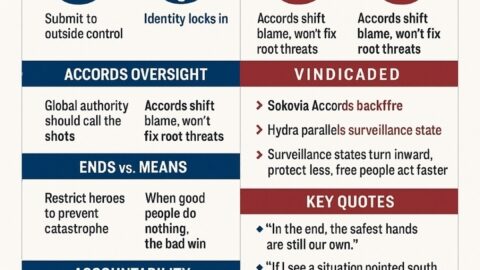One person, one vote, is “wrong on principle and mischievous in its consequences.” –Michael McConnell
“A Republic, if you can keep it,” was the answer Benjamin Franklin gave to a Mrs. Powel, when asked whether the Constitutional Convention had produced a Republic or a Monarchy. A Republic–not a Monarchy. A Republic–not a democracy or a rule by simple majority. Regarding democracy, the founders ranked it among the worst forms of government. As Alexander Hamilton put it during the Constitutional Convention, “real liberty is [not] found in . . . the extremes of Democracy.” A Republican form of government was so important to the framers–that it was guaranteed to the States by Article 4, Section 4, which states, “The United States shall guarantee to every State in this Union a republican form of government. . .“
What is a Republic?
The U.S. Constitutional Republic is more than simple equal representation, however. The differences between the U.S. Republic and a democracy of equal representation is highlighted by the fact that unequal representation was written into the United States Constitution. For instance, Article 1, Section 2, says, “. . . each state shall have at least one Representative,” regardless of population. Or, in the same article and section, “Representatives shall be apportioned among the several states . . .” even if the number of people represented is not the same. The biggest difference however comes with Article 1 Section 3, which states that regardless of size or population, “The Senate of the United States shall be composed of two Senators from each state.”
When setting up their Republican governments most states adopted the Federal Model, known as the “Federal analogy,” and assigned one State Senator to each county. Reasoning that just as Federal Senators represented their respective State (before adoption of the seventeenth amendment), State Senators should represent counties. Furthermore, Hamilton reasoned, if the Federal Government were to deny the States this independent power it would be a “premeditated engine for the destruction of the State governments (Federalist 59).”
Advantages of the “Federal analogy” are numerous–such as: The tendency to pull power from centralized State Government back to counties; Keeping counties whole, rather than split; to give sparsely populated rural counties protection from heavily populated metropolitan areas; placing a check on gerrymandering; The identity it would give citizens in their particular county; To protect lesser populated counties from counties that have major industries and thus competing interests. There may be others I haven’t thought of.
At any rate, the U.S. Constitution, also left it entirely up to the States to decide how to conduct their elections, determining: who was eligible to vote; what positions were needed to run State government; how officers of government were elected; and the drawing up of districts. States, for instance, were perfectly free to adopt the Federal analogy and assign their state Senators by county.
All of this was to change. Beginning with a series of cases better known as the “Reapportionment cases,” the “Federal Analogy” was denied to the States and the Court instead demanded that “The seats of both houses of a bi-cameral legislature must be apportioned on a population basis (Reynolds v. Sims)” and demanded that there should be “One person, One Vote.” For justification the Supreme Court twisted the so-called “Equal Protection Clause” of the 14th amendment. The Equal Protection Clause simply means that everyone is entitled to equal protection under the law and were thus entitled to “One Person, one Vote.” But, as Justice Harlan’s dissenting voice pointed out, the equality clause has nothing at all to do with the States power of choosing “any democratic method they pleased for the apportionment of their legislatures.”
Further, as we learned, “One person, one vote” was not built into the United States Constitution. Instead, it was unequal representation that was built in. The dissenting opinion of Justice Frankfurter demonstrated this knowledge when he wrote that equal representation, “has never been generally practiced . . . It was not the English system, it was not the colonial system, it was not the system chosen for the national government by the Constitution, it was not the system . . . practiced by the States . . . [and it was not then] practiced by the states today.”
So today, to recap, because of the Reapportionment cases (Baker v. Carr & Reynolds v. Sims), States are denied a Republican form of government when it comes to their State Senators. State Senators can no longer represent single counties, but instead Senatorial districts must be drawn up by population. Not only that, but sparsely populated counties must now share a State Senator between, 2 or more, counties.
The Supreme Courts faulty reasoning on this issue should be obvious to anyone. Taking the Supreme Courts logic–Why shouldn’t populous states such as Texas or California have say, 75 or 100 U.S. Senators, and limit sparsely populated states such as North Dakota or Wyoming to only one? The Founders clearly rejected proportional representation for the Senate. Isn’t it about time the Supreme Court reversed itself and allow the States freedom to adopt the “Federal Analogy” if they choose–instead of punishing them with the worst of all forms of government–unchecked democracy?
Iron County residents, I implore you to challenge this bone-headed interpretation of the Federal Analogy in the courts. If you wish to remain independent and free.







